What Are Kubernetes Tools?
Kubernetes tools are software solutions and utilities that simplify the management, deployment, and monitoring of applications in Kubernetes clusters. These tools cover various aspects of Kubernetes operations, from cluster setup to monitoring, security, and scaling.
Kubernetes is complex, with numerous components like pods, nodes, services, and configurations that require constant attention. Kubernetes tools are needed to automate tasks, improve visibility, and improve security.
There are different categories of Kubernetes tools tailored to specific tasks, such as command-line tools for resource management, cluster management tools for multi-cluster environments, CI/CD tools for automating deployments, and security tools for ensuring compliance and protection.
This is part of a series of articles about Kubernetes Management.
Why Do You Need Kubernetes Tools?
Kubernetes has transformed how modern applications are orchestrated, offering scalability, reliability, and ease of deployment. However, the platform’s complexity requires a deep understanding of multiple components.
Kubernetes tools simplify management, automate tasks, and optimize operational workflows. They can monitor cluster performance, manage container lifecycle tasks, and automate deployment processes. They reduce operational overhead, enabling teams to focus on building value-added services.
Kubernetes tools also aid in maintaining a secure environment, applying patches, managing access controls, and ensuring compliance with security policies. By integrating these tools, teams can harness Kubernetes’ capabilities without getting entangled in its complexities.
Kubernetes Command-Line Tools
1. Kubectl

kubectl is the primary command-line tool used to interact with Kubernetes clusters. It provides a straightforward interface to manage resources on the cluster. Users can deploy applications, inspect and manage cluster resources, and view logs through efficient commands. The tool enables developers and administrators to perform complex configurations quickly.
kubectl supports extension with plugins to improve functionality. This allows developers to build custom commands tailored to various cluster requirements.
License: Apache-2.0
Repo: https://github.com/kubernetes/kubernetes
GitHub stars: 110k
Contributors: 650+

Source: Kubernetes
2. k9s

k9s provides a terminal-based user interface that enables interactive, real-time management of Kubernetes clusters. It offers an alternative to the traditional command-line experience by presenting resources and operations in an intuitive format, making cluster management more accessible. This tool allows users to navigate through clusters easily to manage resources and review logs.
K9s accelerates the execution of common Kubernetes tasks. By visualizing resource hierarchy and health, it improves situational awareness and operability for DevOps engineers.
License: Apache-2.0
Repo: https://github.com/derailed/k9s
GitHub stars: 26k+
Contributors: 250+
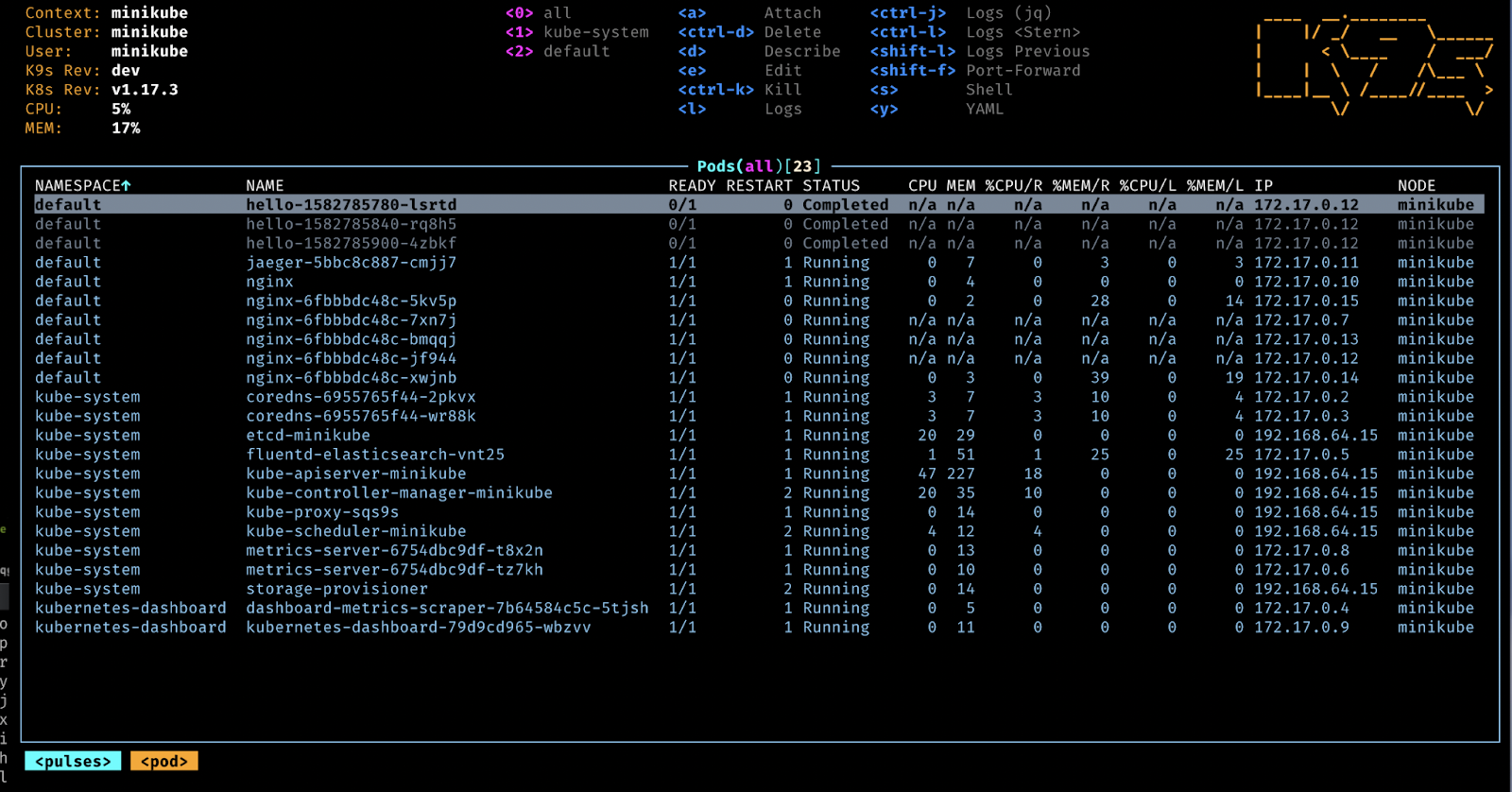
Source: k9s
3. kubectx + kubens

kubectx and kubens are two lightweight tools that simplify the management of Kubernetes contexts and namespaces. kubectx simplifies the process of switching between multiple Kubernetes clusters, while kubens allows users to change namespaces more easily. Together, they provide a more efficient way to navigate different cluster environments without constantly typing out lengthy commands.
These tools are particularly useful for developers and operators who work across multiple Kubernetes environments. By reducing context switching time and potential errors, kubectx and kubens increase productivity and accuracy.
License: Apache-2.0
Repo: https://github.com/ahmetb/kubectx/blob/master/kubens
GitHub stars: 17k+
Contributors: 60+

TIPS FROM THE EXPERT
In my experience, here are tips that can help you better utilize Kubernetes tools:
- Integrate security scanning early in the CI/CD pipeline: Security tools like Trivy and Kube-hunter should be part of the CI/CD process. Scan images and Kubernetes manifests before deployment to catch vulnerabilities early, ensuring secure deployments without compromising delivery speed.
- Automate namespace and context switching in complex environments: When working across multiple clusters and namespaces, tools like kubectx and kubens can save considerable time by automating context switching. Use bash aliases or scripts to further optimize workflows in multi-cluster setups.
- Monitor cluster state changes with Kube-state-metrics: To gain better insights into your cluster’s internal state, pair Prometheus with Kube-state-metrics. It extends standard monitoring to expose more detailed metrics about Kubernetes resources like nodes, pods, and deployments, making it easier to detect issues early.
- Test local Kubernetes changes before cluster deployment: Use Minikube or k3s to replicate your production environment locally. This helps avoid unforeseen issues in production clusters by allowing you to run and test new configurations or application versions in a local Kubernetes setup.
- Use service mesh selectively: Service meshes like Istio and Linkerd add overhead. Before adopting, ensure the complexity is justified by your application architecture. If observability, security, and traffic management are critical for your microservices, only then deploy a service mesh.
Kubernetes Cluster Management Tools
4. Rancher

Rancher is an open-source platform that aids in managing Kubernetes clusters across various types of infrastructure. It offers a unified interface to deploy, manage, and secure applications in Kubernetes. Rancher simplifies cluster operations by providing capabilities like monitoring, alerting, and load balancing. Its multi-cluster support is suitable for hybrid cloud strategies.
Rancher improves security by integrating with Kubernetes’ native security controls and offering additional layers. It simplifies policy implementation and compliance across multiple clusters.
License: Apache-2.0
Repo: https://github.com/rancher/rancher
GitHub stars: 23k+
Contributors: 250+
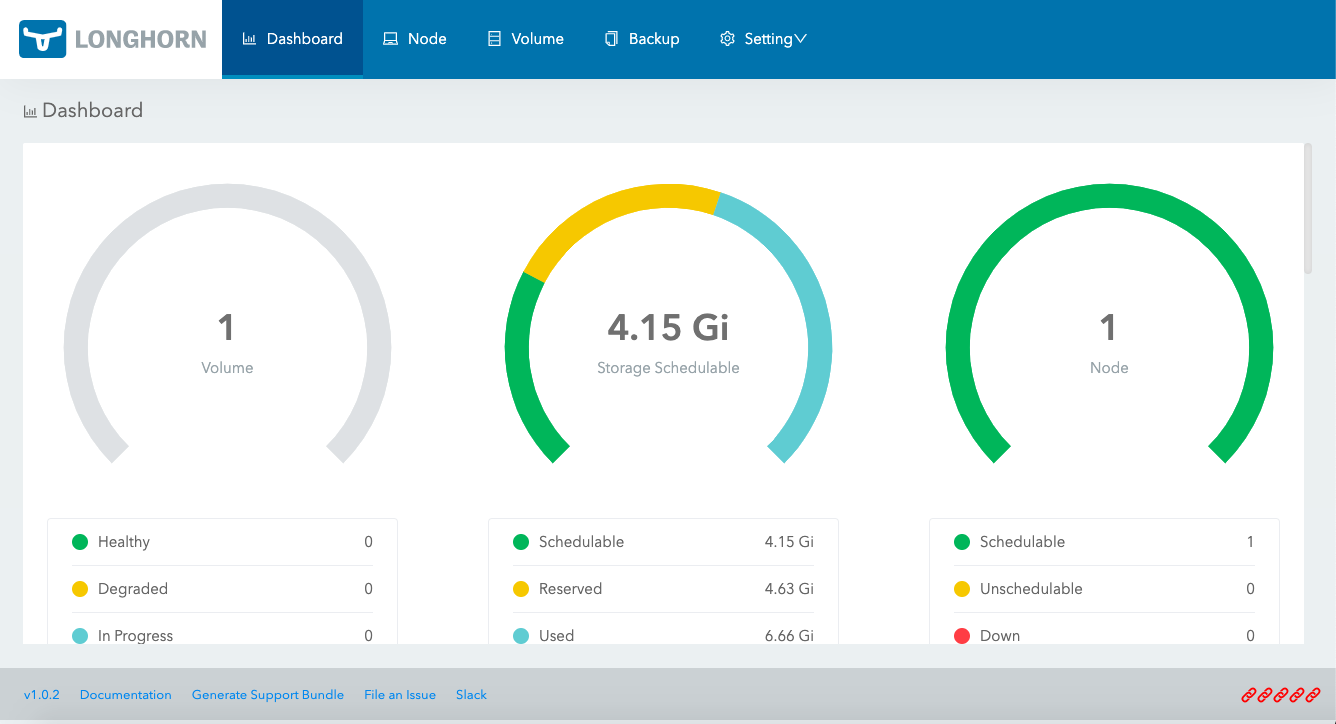
Source: Rancher
5. Kops

Kops is a Kubernetes cluster management tool for simplifying cluster deployment on cloud platforms, particularly AWS. It automates the provisioning and management of Kubernetes clusters, allowing for the creation, destruction, upgrade, and scaling. Kops integrates cloud-native features, such as DNS configuration, to establish production-ready environments.
The tool’s automation capabilities reduce the complexity of Kubernetes setups, contributing to faster deployment times and consistent configurations. It supports infrastructure as code practices that improve repeatability and reliability.
License: Apache-2.0
Repo: https://github.com/kubernetes/kops
GitHub stars: 15k+
Contributors: 900+
6. OpenShift

OpenShift is a Kubernetes-powered platform with additional developer-centric features to enable full-stack automated operations. Offered by Red Hat, it includes an integrated development environment for building and scaling applications. OpenShift improves the standard Kubernetes capabilities by providing tools and services for CI/CD workflows.
The platform also emphasizes security, offering advanced policy management and security benchmarks. It has built-in support for a range of development, testing, and deployment processes.
License: Apache-2.0
Repo: https://github.com/openshift/origin
GitHub stars: 8k+
Contributors: 500+
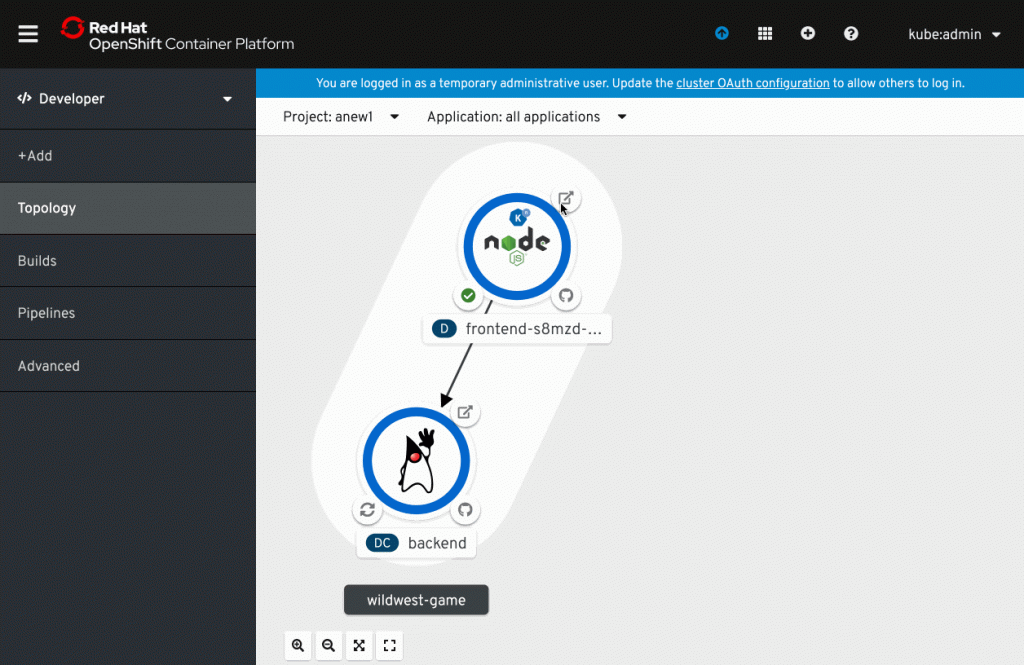
Source: Red Hat
Local Cluster Management Tools
7. Minikube

Minikube is a tool that launches a single-node Kubernetes cluster on personal computers, simplifying local development. It supports multiple hypervisors, ensuring that developers can test on environments closely mirroring production settings. For developers practicing locally before deployment, Minikube provides a consistent Kubernetes setup.
The tool also offers features like dynamic volume provisioning and multi-cluster management options. By emulating a production Kubernetes environment, Minikube enables developers to identify potential issues early in the development cycle.
License: Apache-2.0
Repo: https://github.com/kubernetes/minikube
GitHub stars: 29k+
Contributors: 850+

Source: Minikube
8. k3s

k3s is a lightweight Kubernetes distribution for resource-constrained environments like edge computing or IoT devices. This compact package reduces Kubernetes’ footprint without sacrificing essential features, allowing it to run efficiently on devices with limited computational power. k3s is optimized for quick deployment and lower resource consumption.
Despite its smaller size, k3s maintains compatibility with standard Kubernetes APIs and tools, making it suitable for development and production scenarios. With simplified operational demands, k3s is useful for less traditional computing environments.
License: Apache-2.0
Repo: https://github.com/k3s-io/k3s
GitHub stars: 27k+
Contributors: 1850+
9. k0s

k0s is a Kubernetes distribution aiming for simplicity and efficiency in cluster setup and operation. It reduces the complexity associated with traditional Kubernetes installations by providing a package that simplifies the process from installation to operation. k0s is useful for running Kubernetes clusters in constrained and transient environments, from edge locations to CI/CD pipelines.
The single-node deployment in k0s enables development, testing, and operational processes without the overhead of standard Kubernetes management. Its lightweight structure allows IT teams to deploy resilient Kubernetes environments swiftly.
License: CC-BY-SA-4.0, Apache-2.0
Repo: https://github.com/k0sproject/k0s
GitHub stars: 3k+
Contributors: ~100

Source: k0s
Kubernetes CI/CD Tools
10. Codefresh

Codefresh is a Kubernetes-native CI/CD platform designed to simplify the continuous integration and delivery of applications. It builds on open-source tools like Argo to provide a comprehensive solution for managing deployments, rollbacks, and version control in Kubernetes environments. Codefresh supports GitOps workflows, allowing users to manage deployments via Git repositories, which improves traceability and consistency.
Codefresh’s intuitive interface and extensive integrations with Kubernetes make it ideal for teams looking to streamline their software delivery pipelines. Its built-in monitoring and visualization tools help track deployment statuses, automate testing, and ensure that applications are continuously aligned with a desired state.
License: Commercial (based on open source Argo project)
Learn more about the Codefresh platform
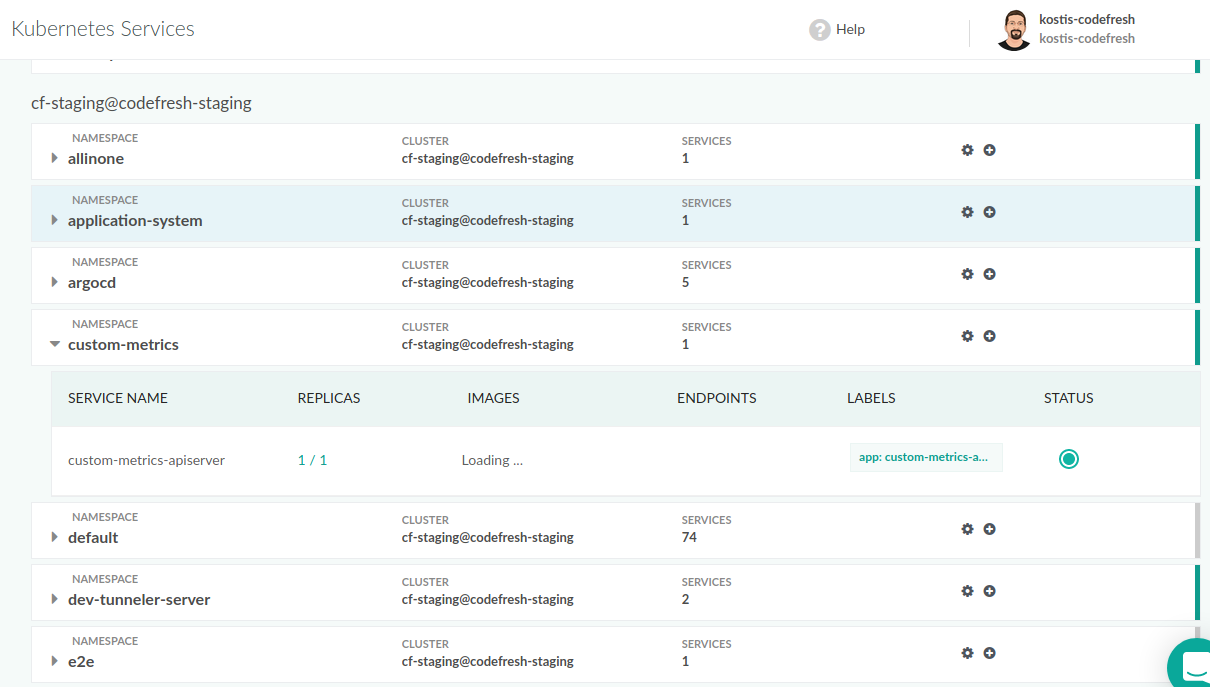
Source: Codefresh
11. Octopus Deploy

Octopus Deploy is a deployment automation tool that integrates with Kubernetes, allowing users to define, schedule, and monitor deployments across various environments. With its built-in support for Kubernetes, Octopus simplifies the release process by providing templates for Kubernetes resources, such as Helm charts, YAML, and Docker images. This enables teams to automate complex deployment workflows, track releases, and roll back changes if necessary.
Octopus Deploy is particularly useful for enterprises managing large-scale Kubernetes environments, as it supports multi-cluster deployments and can integrate with CI/CD pipelines to automate the entire release process from development to production. Octopus specializes in bringing simple automation of complex environment promotion scenarios, which many other Kubernetes tools struggle with.
License: Commercial
Learn more about Octopus Deploy
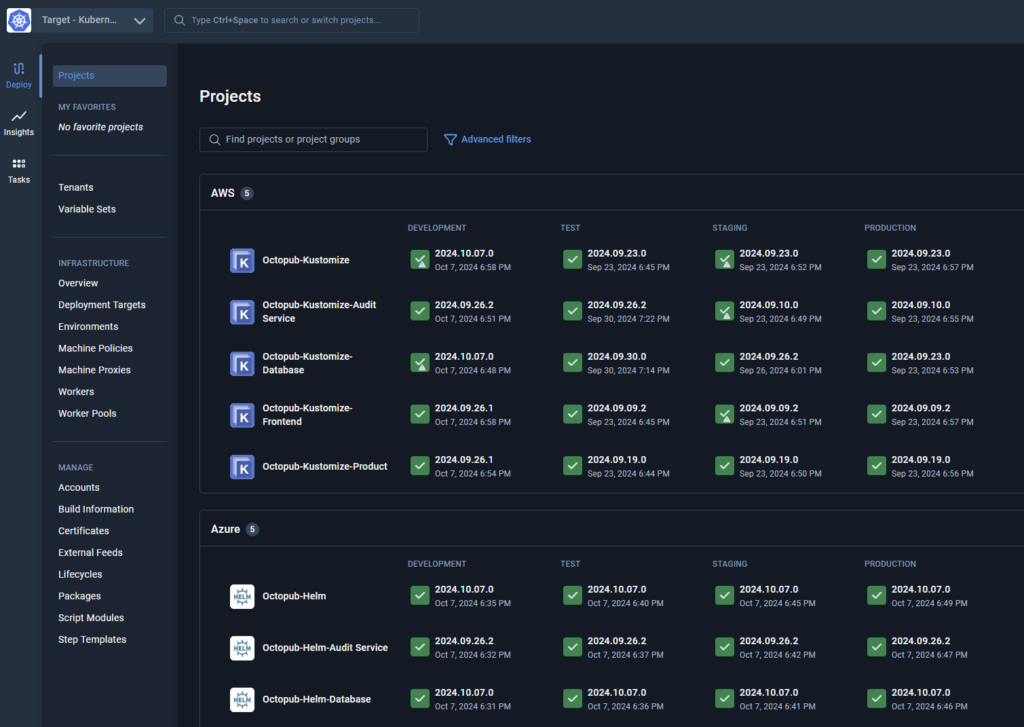
Source: Octopus Deploy
12. Argo CD

Argo CD is a declarative GitOps continuous delivery tool for Kubernetes. It automates the deployment of applications, enforcing configurations stored in a Git repository. This ensures that the live infrastructure matches its declared state, improving reliability and version control.
Argo CD’s real-time monitoring and alerting provide a cohesive overview of application synchronization and status. It also promotes GitOps practices by integrating with existing CI/CD tools and workflows.
License: Apache-2.0
Repo: https://github.com/argoproj/argo-cd
GitHub stars: 17k+
Contributors: 1400+
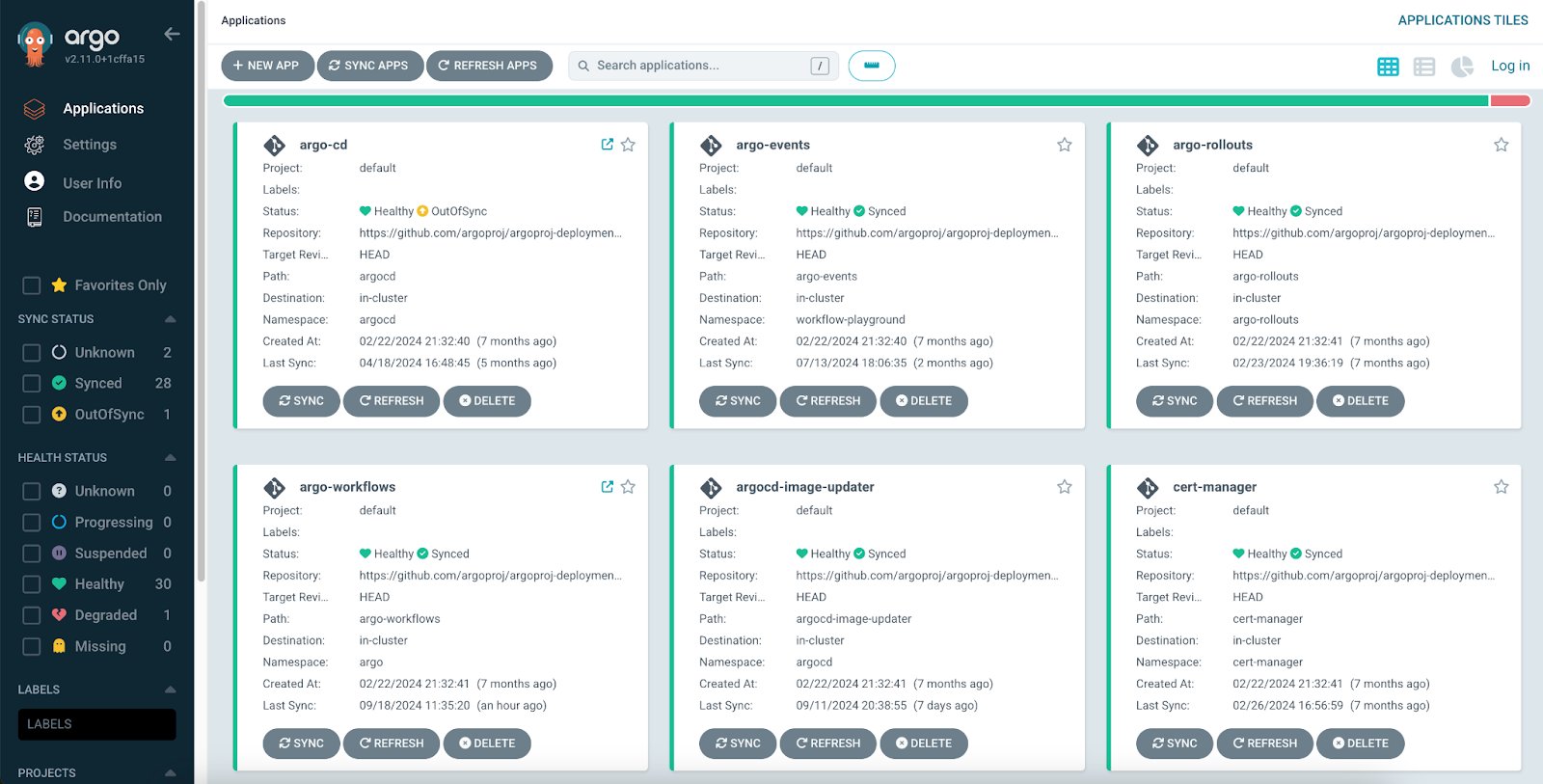
Source: Argo CD
13. GitHub Actions

GitHub Actions is an automation platform that integrates with development workflows, including Kubernetes deployments. By utilizing pre-configured actions or creating custom workflows, teams can automate building, testing, and deploying applications directly from their GitHub repositories. This integration with Kubernetes clusters accelerates the software delivery process.
The platform enables collaboration and continuous feedback, simplifying operations from code commit to deployment. GitHub Actions taps into the existing GitHub ecosystem to simplify CI/CD processes, making it suitable for teams already invested in the GitHub platform.
License: MIT
Repo: https://github.com/actions/runner-images
GitHub stars: 9k+
Contributors: 250+
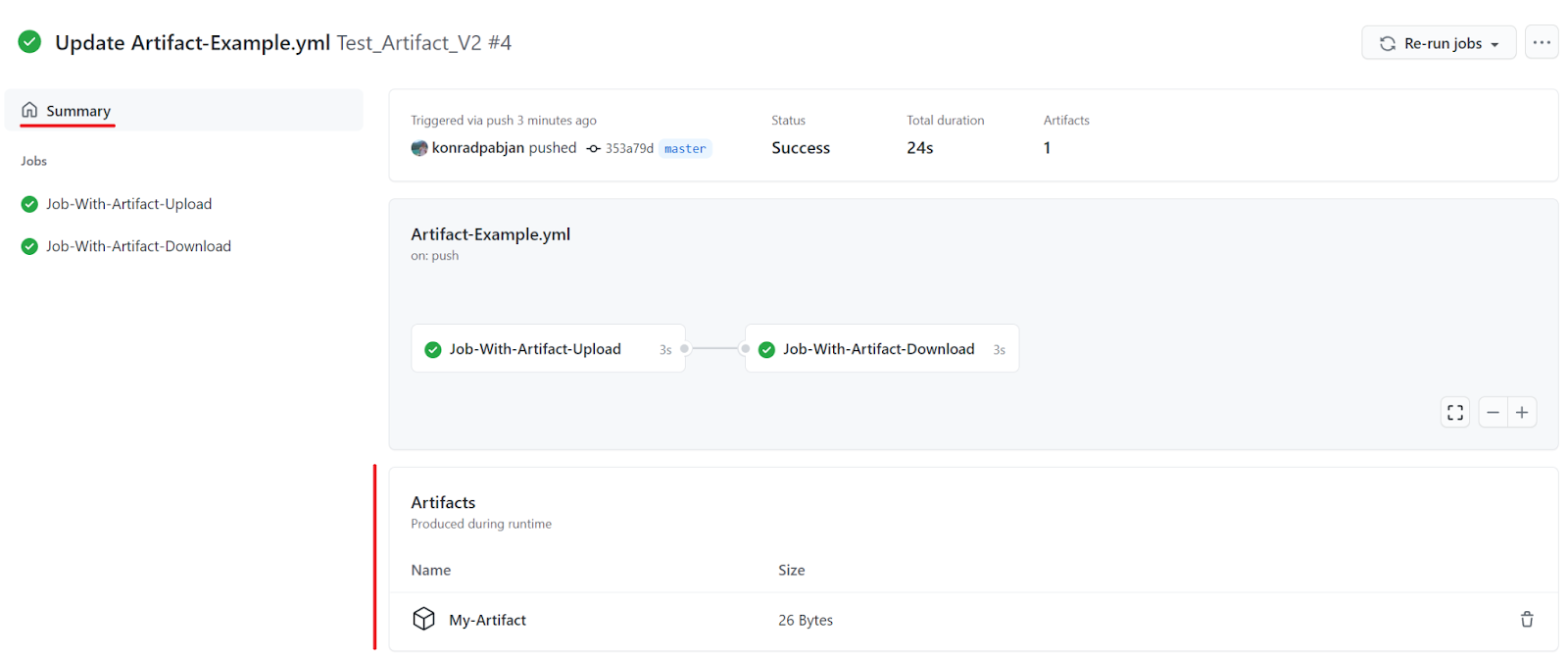
Source: GitHub
Kubernetes UI Tools
14. Kubernetes Dashboard

The Kubernetes Dashboard provides a graphical interface to manage and monitor Kubernetes clusters. It enables users to deploy containerized applications, troubleshoot errors, and manage cluster resources without relying solely on the command line. By giving a visual representation of the cluster’s health and operational status, it simplifies the complexity of Kubernetes management.
Through the dashboard, users can view logs, inspect applications, and monitor resource usage in real time. It improves operational efficiency, particularly for teams seeking to reduce the learning curve associated with Kubernetes.
License: Apache-2.0
Repo: https://github.com/kubernetes/dashboard
GitHub stars: 14k+
Contributors: 350+
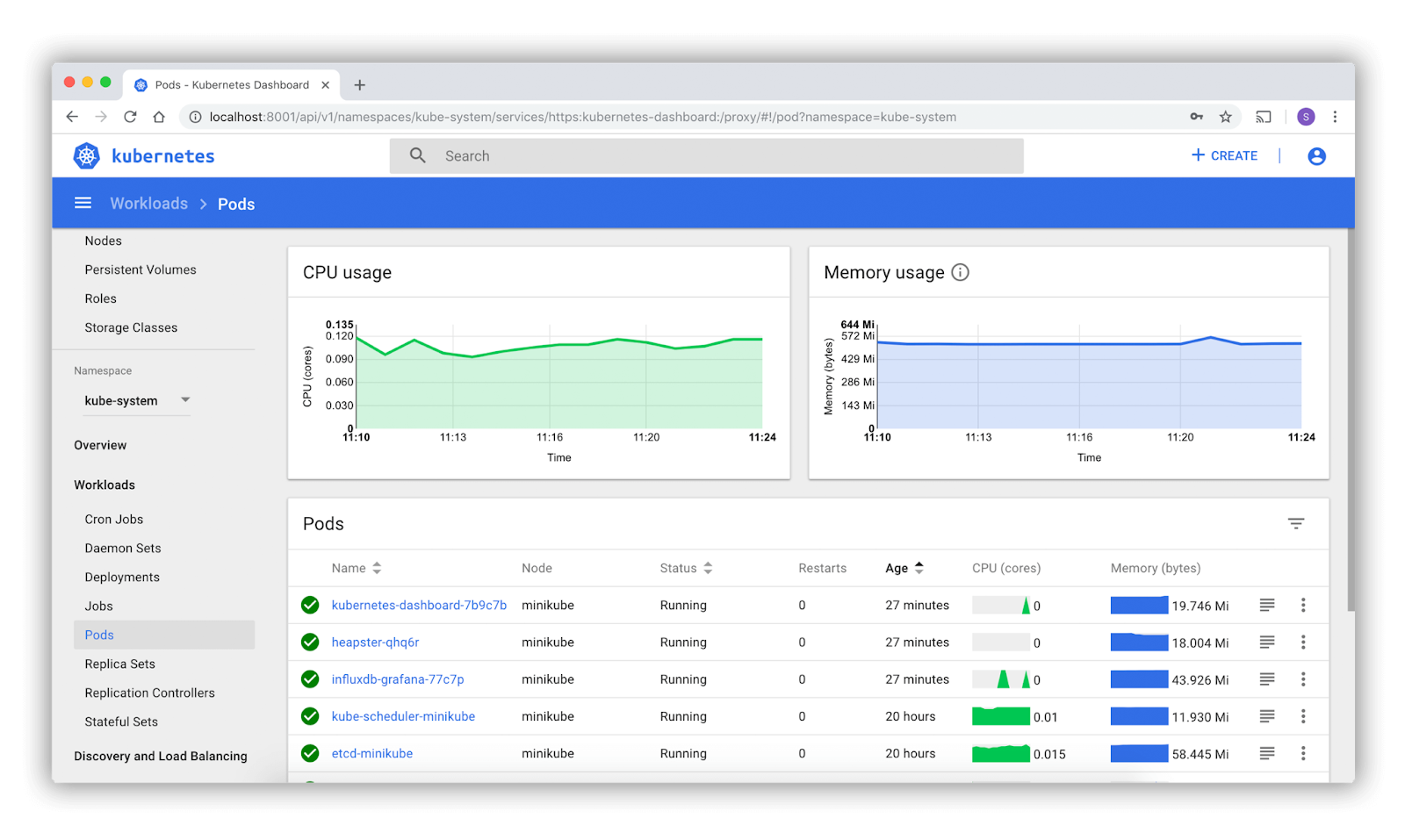
Source: Kubernetes
15. Octant
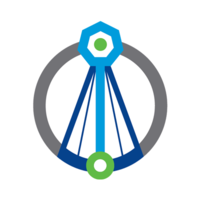
Octant offers a Kubernetes cluster viewer that provides detailed insights into the entire environment. The tool visualizes cluster resources and their dependencies, allowing users to explore configurations and understand relationships between different elements. Octant provides a deep level of observability, supporting better decision-making in managing clusters.
Useful for real-time troubleshooting and introspection, Octant simplifies the process of tracking application health and debugging challenges. It aids in understanding complex deployments by surfacing relevant information and metrics.
License: Apache-2.0
Repo: https://github.com/vmware-archive/octant
GitHub stars: 6k+
Contributors: 50+
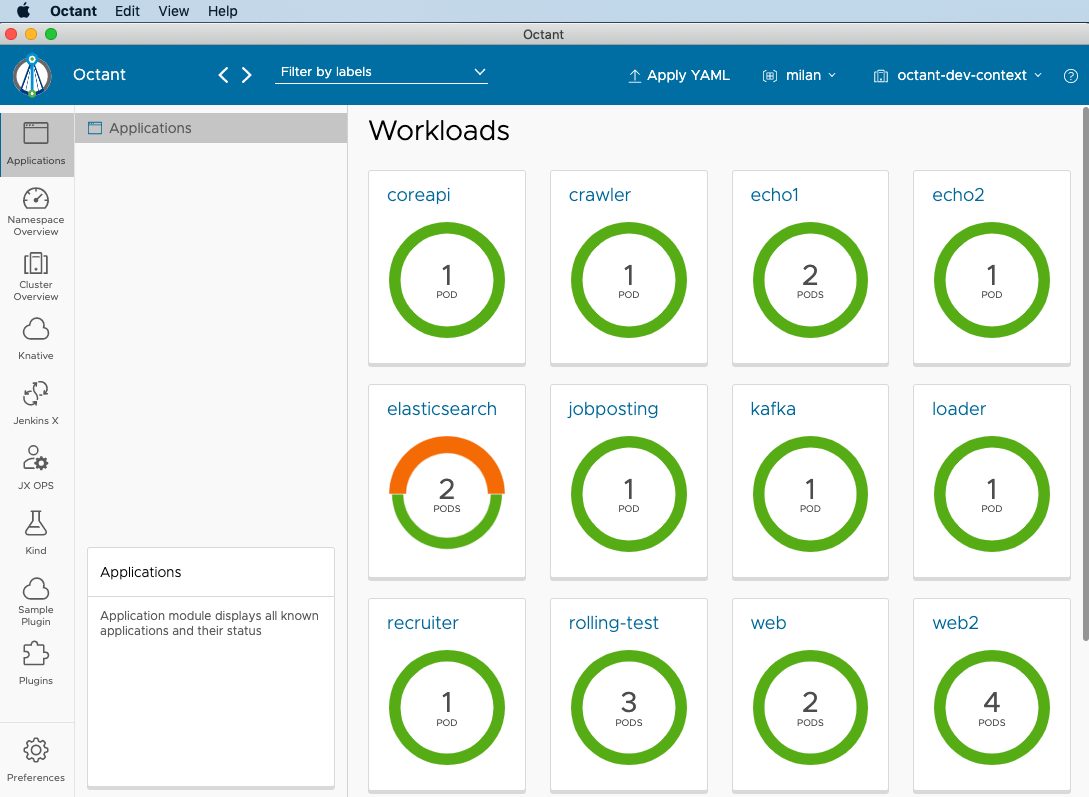
Source: Octant
16. Lens

Lens is an integrated IDE for Kubernetes, offering features such as context switching, multi-cluster support, and real-time metrics. It provides a cohesive view of clusters and environments, simplifying navigation and management tasks through a unified platform interface.
Features like role-based access control and operational insights make Lens useful for both professionals and newcomers.
License: MIT
Repo: https://github.com/lensapp/lens
GitHub stars: 22k+
Contributors: 100+
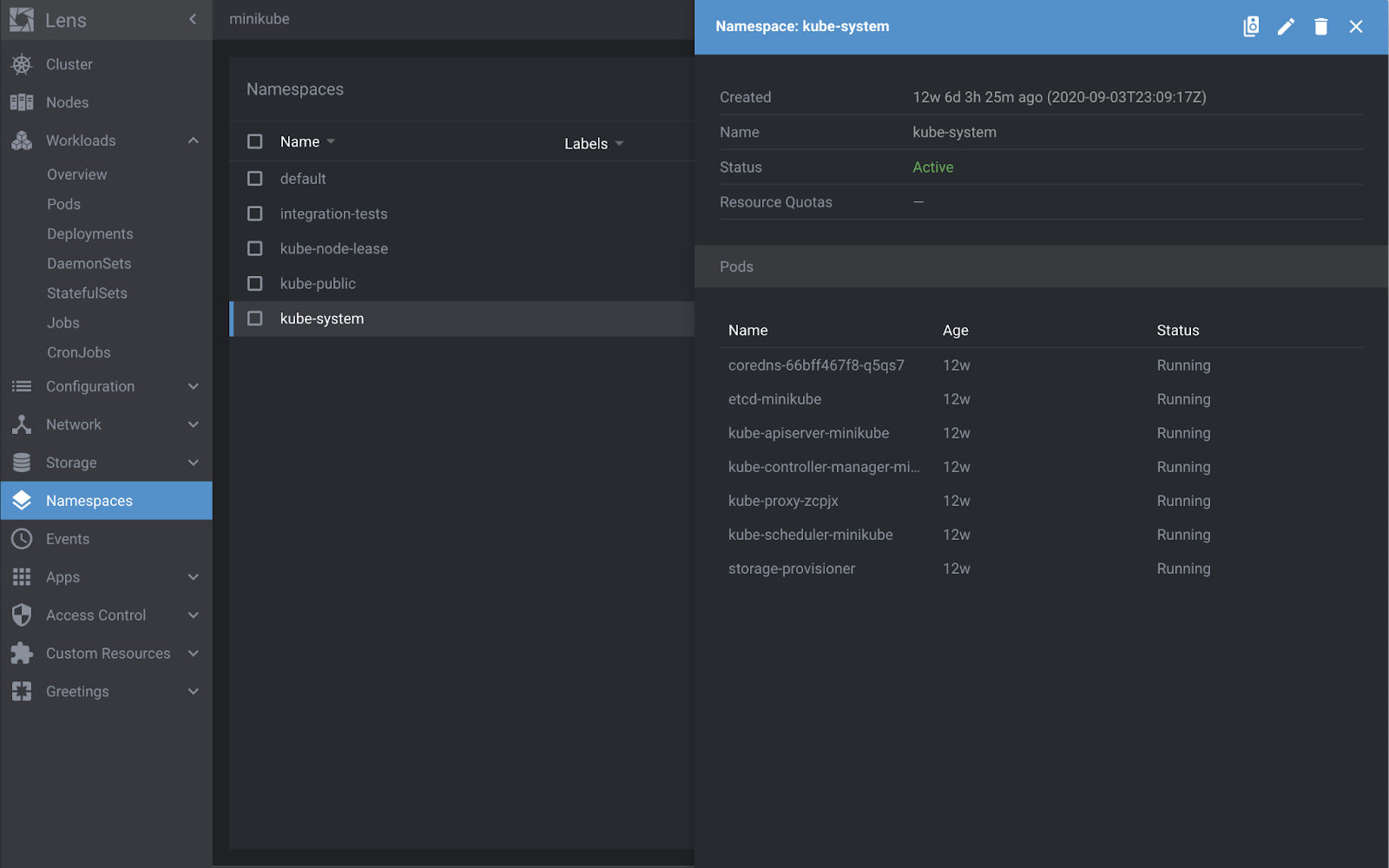
Source: Lens
Kubernetes Service Mesh Tools
17. Calico by Tigera

Tigera provides a Kubernetes-native service mesh solution built on Calico that emphasizes security, observability, and centralized policy management across multi-cluster environments. It supports federated services and endpoint identities, enabling unified service discovery and consistent policy enforcement across distributed workloads.
With Tigera’s centralized management plane, users can create, manage, and apply network and security policies across all clusters through a single dashboard. It integrates Kubernetes RBAC to control access, supports federated policies to maintain compliance across regions, and blocks traffic between compliant and non-compliant workloads.
For observability, Tigera offers a unified UI to view workloads, analyze traffic flows, generate compliance reports, and trigger packet captures using its dynamic service graph. Its solution is designed for enterprise-scale deployments, available on both AWS and Azure marketplaces.
License: Calico Open Source licensed under Apache-2.0. Calico Enterprise is commercial.
Repo: https://github.com/projectcalico/calico
18. Istio

Istio is a service mesh that layers on top of Kubernetes clusters to manage microservices architecture. It offers traffic management, security, and observability, useful for managing complex service interactions. Istio abstracts much of the network management complexity, providing resilience and load-balancing mechanisms that improve service reliability.
Istio’s security framework implements mutual TLS, providing automatic encryption of service-to-service communications. It assists in simplifying microservices management and improving the security posture of Kubernetes deployments.
License: Apache-2.0
Repo: https://github.com/istio/istio
GitHub stars: 35k+
Contributors: 1000+
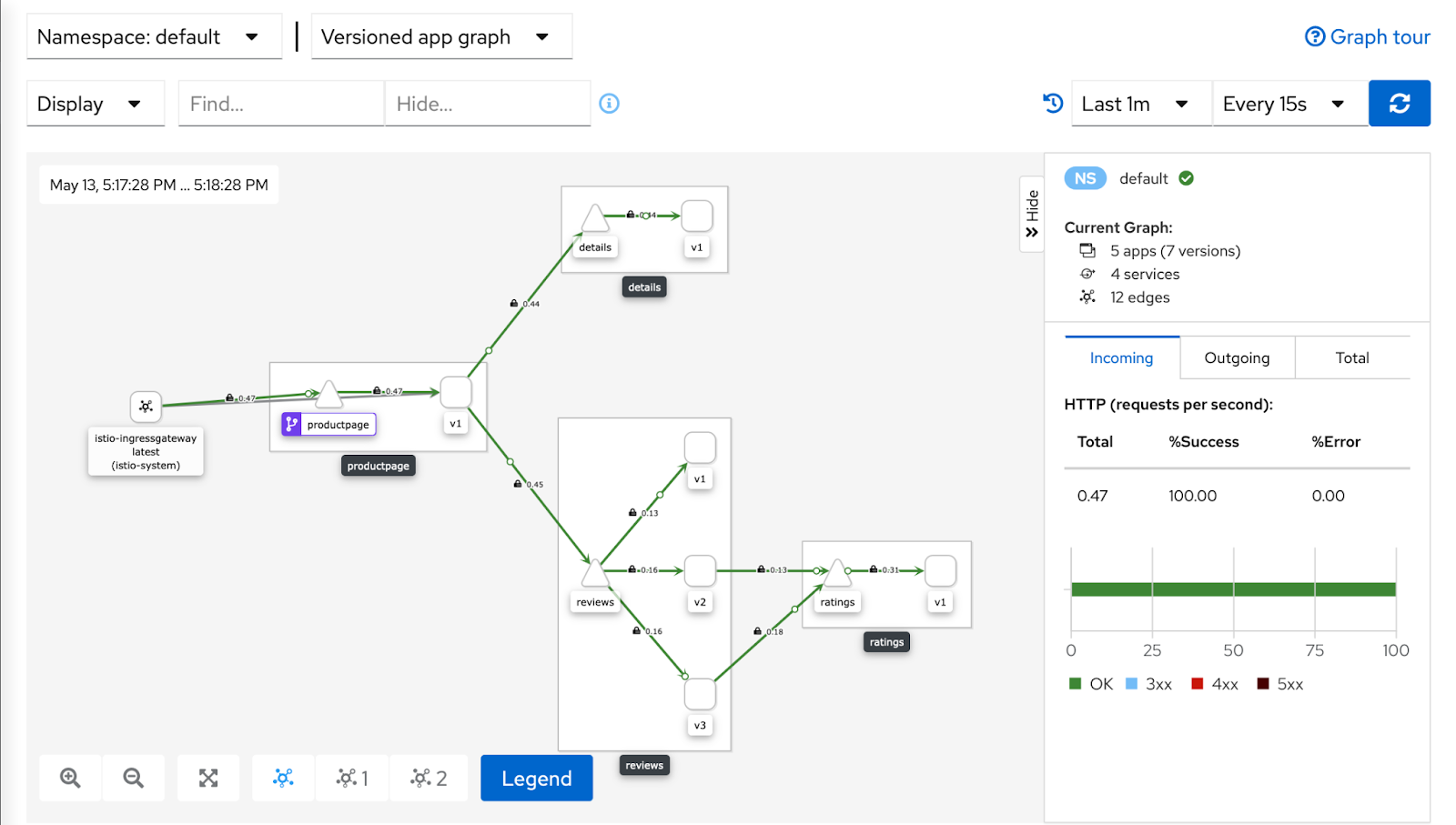
Source: Istio
19. Linkerd

Linkerd is a lightweight service mesh that improves observability, security, and reliability of service communications within Kubernetes environments. With minimal configuration required, Linkerd offers traffic shifting, retries, and timeouts, enabling smooth service interactions while maintaining resource efficiency.
Its simplified design is easy to deploy and manage, suitable for introducing service mesh capabilities with minimal overhead.
License: Apache-2.0
Repo: https://github.com/linkerd/linkerd2
GitHub stars: 10k+
Contributors: 350+

Source: Linkerd
20. Consul

Consul by HashiCorp offers a service mesh and service discovery solution that integrates with Kubernetes. It provides traffic control between services, policy enforcement, and network configuration automation, enabling highly dynamic microservices architectures. Consul’s integration with multiple cloud environments makes it suitable for hybrid and multi-cloud deployments.
Consul’s support for a range of proxies and services ensures flexible architecture design. Its adaptability and feature set make it suitable for implementing service mesh capabilities across complex Kubernetes infrastructure.
License: Business Source License
Repo: https://github.com/hashicorp/consul
GitHub stars: 28k+
Contributors: 900+
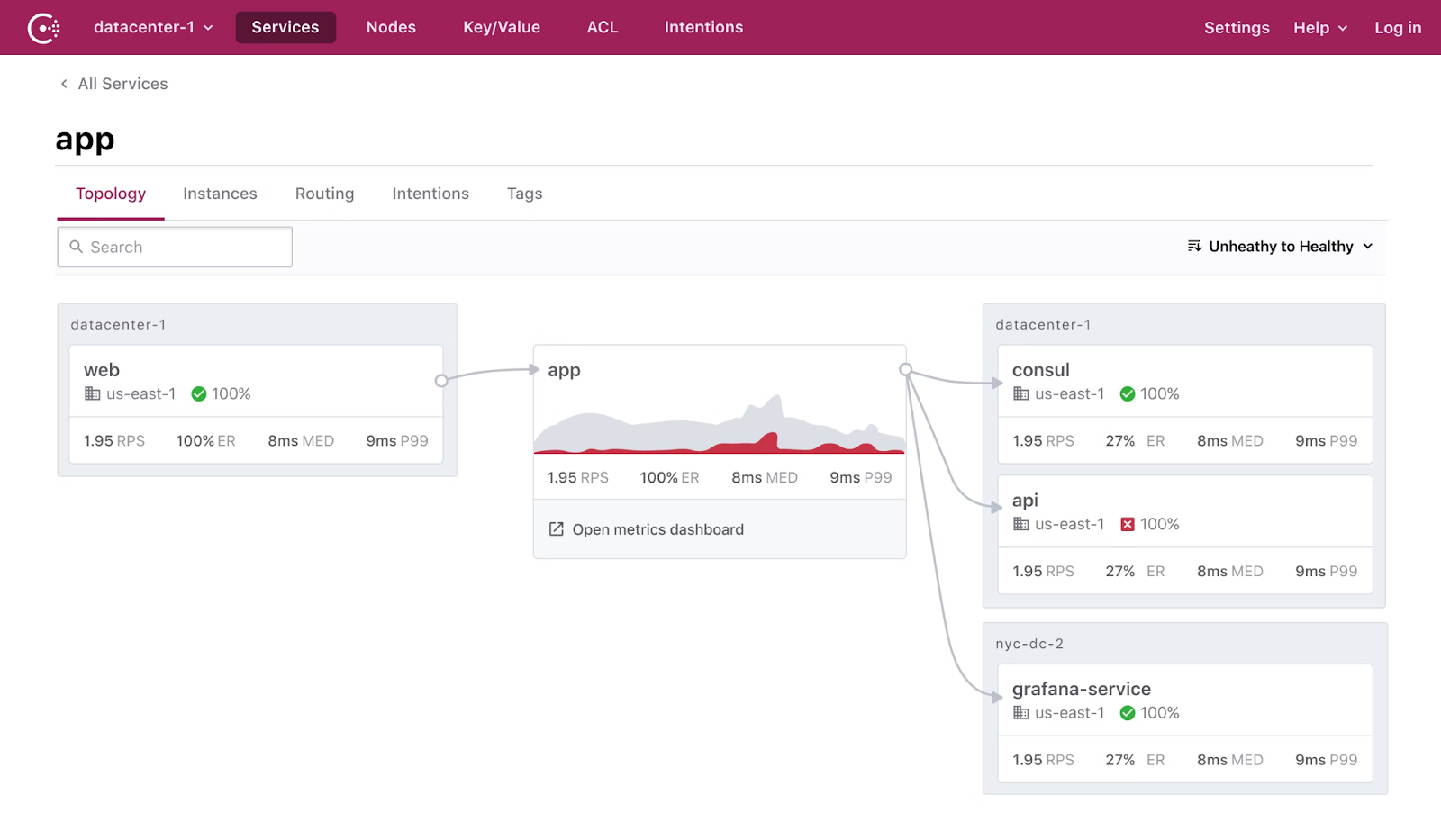
Source: HashiCorp
Kubernetes Monitoring Tools
21. Prometheus

Prometheus is an open-source monitoring and alerting toolkit for application monitoring. It’s widely adopted in Kubernetes environments for its querying and alerting capabilities. Prometheus collects time-series data, enabling performance monitoring, capacity planning, and diagnostics. Its query language, PromQL, enables detailed analysis and visualization of metrics.
With native support for Kubernetes, Prometheus offers insights into cluster health and performance. Its alerting system ensures prompt issue detection and response.
License: Apache-2.0
Repo: https://github.com/prometheus/prometheus
GitHub stars: 54k+
Contributors: 900+
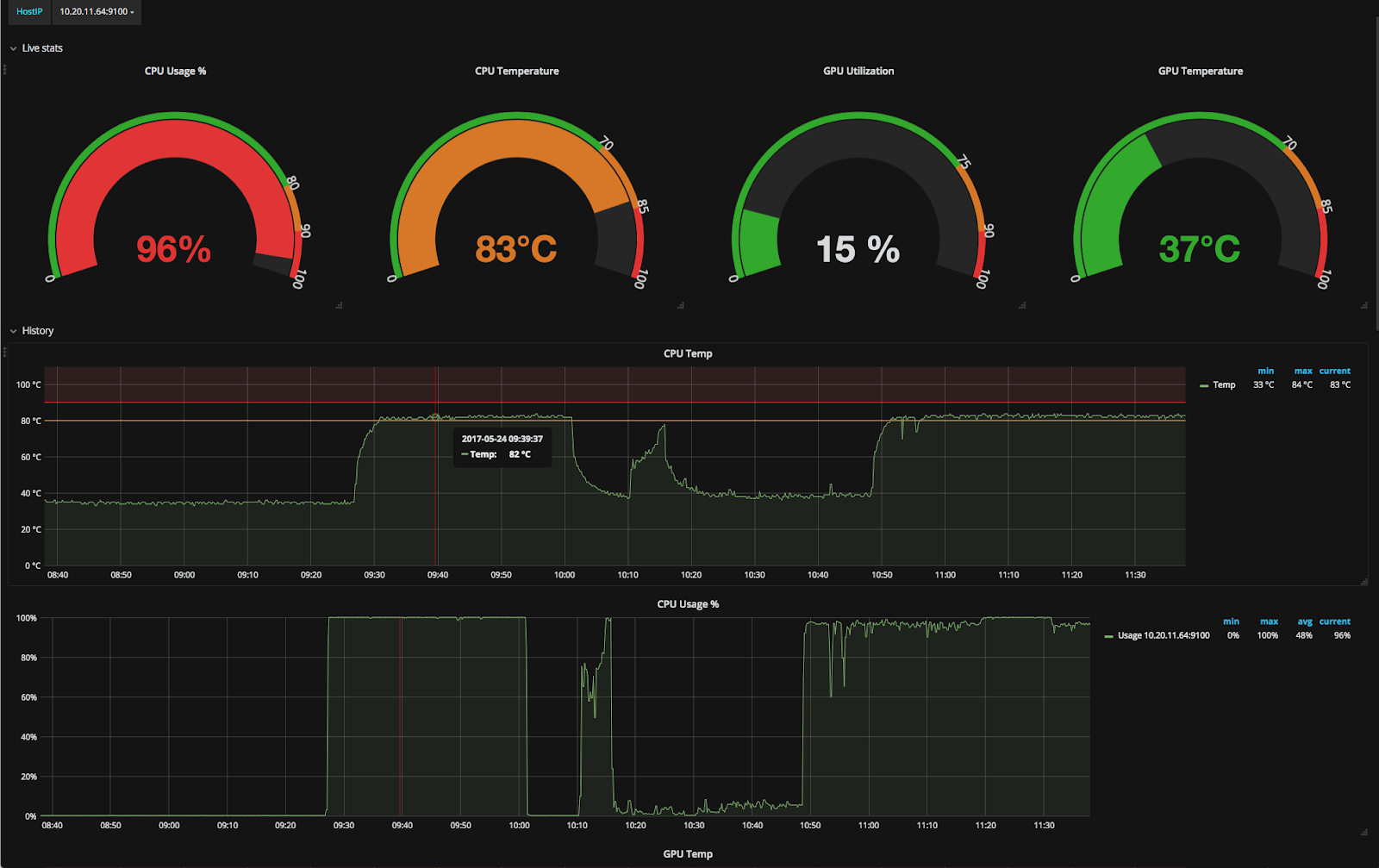
Source: Prometheus
22. Grafana

Grafana is a data visualization tool for creating real-time, dynamic dashboards from various data sources, including Prometheus. In Kubernetes environments, Grafana offers a view of cluster metrics, enabling teams to visualize performance, track changes, and identify bottlenecks quickly. Its dashboard allows users to spot trends and make informed decisions.
The tool’s flexibility extends through its plugin ecosystem, allowing customization to suit various operational needs. Grafana’s integration with Kubernetes monitoring tools like Prometheus makes it useful as a central hub for analyzing performance metrics.
License: AGPL-3.0
Repo: https://github.com/grafana/grafana
GitHub stars: 63k+
Contributors: 2300+
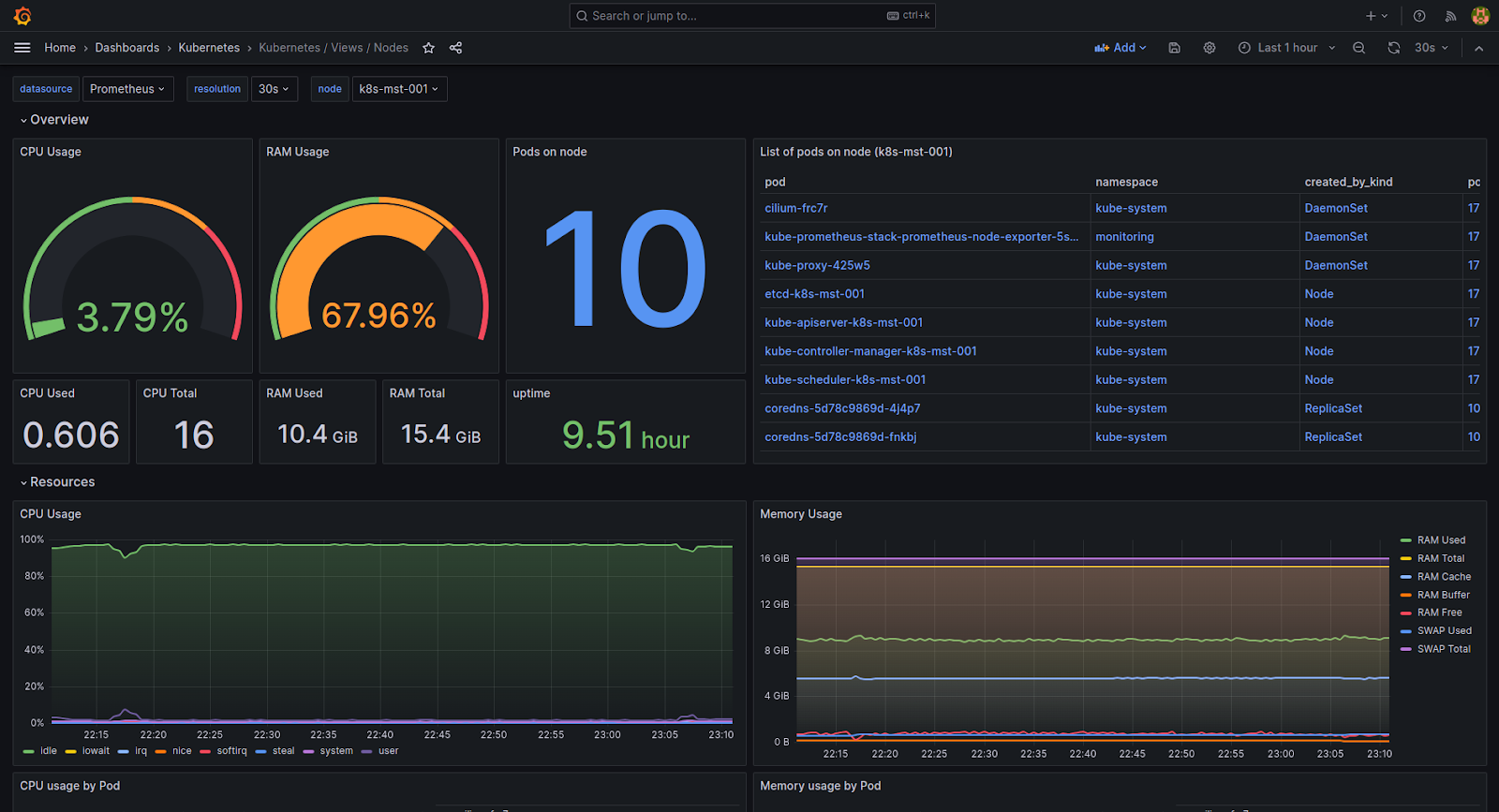
Source: Grafana
23. Kube-state-metrics

Kube-state-metrics is a monitoring solution that translates Kubernetes resource states and statistics into Prometheus metrics. By exporting metrics of cluster states, such as deployments, pods, and services, it improves observability into Kubernetes operations. The tool enriches Prometheus monitoring by providing additional insights into the Kubernetes API.
Through integration with Prometheus, kube-state-metrics supports effective alerting and dashboarding, helping teams understand and fine-tune their Kubernetes environments.
License: Apache-2.0
Repo: https://github.com/kubernetes/kube-state-metrics
GitHub stars: 5k+
Contributors: 350
Kubernetes Security Tools
24. Falco

Falco is an open-source security tool that detects threats and anomalies in real time within Kubernetes environments. By monitoring system calls, network, and file system activity, Falco identifies inappropriate behavior by referring to security rules that define normal operations. Its detection capabilities aid in identifying threats early and providing insights for security events.
Falco’s integration with Kubernetes sends security alerts when actions violate predefined rules. This proactive detection allows teams to respond swiftly to potential security breaches, improving overall cluster security.
License: Apache-2.0
Repo: https://github.com/falcosecurity/falco
GitHub stars: 7k+
Contributors: 150+
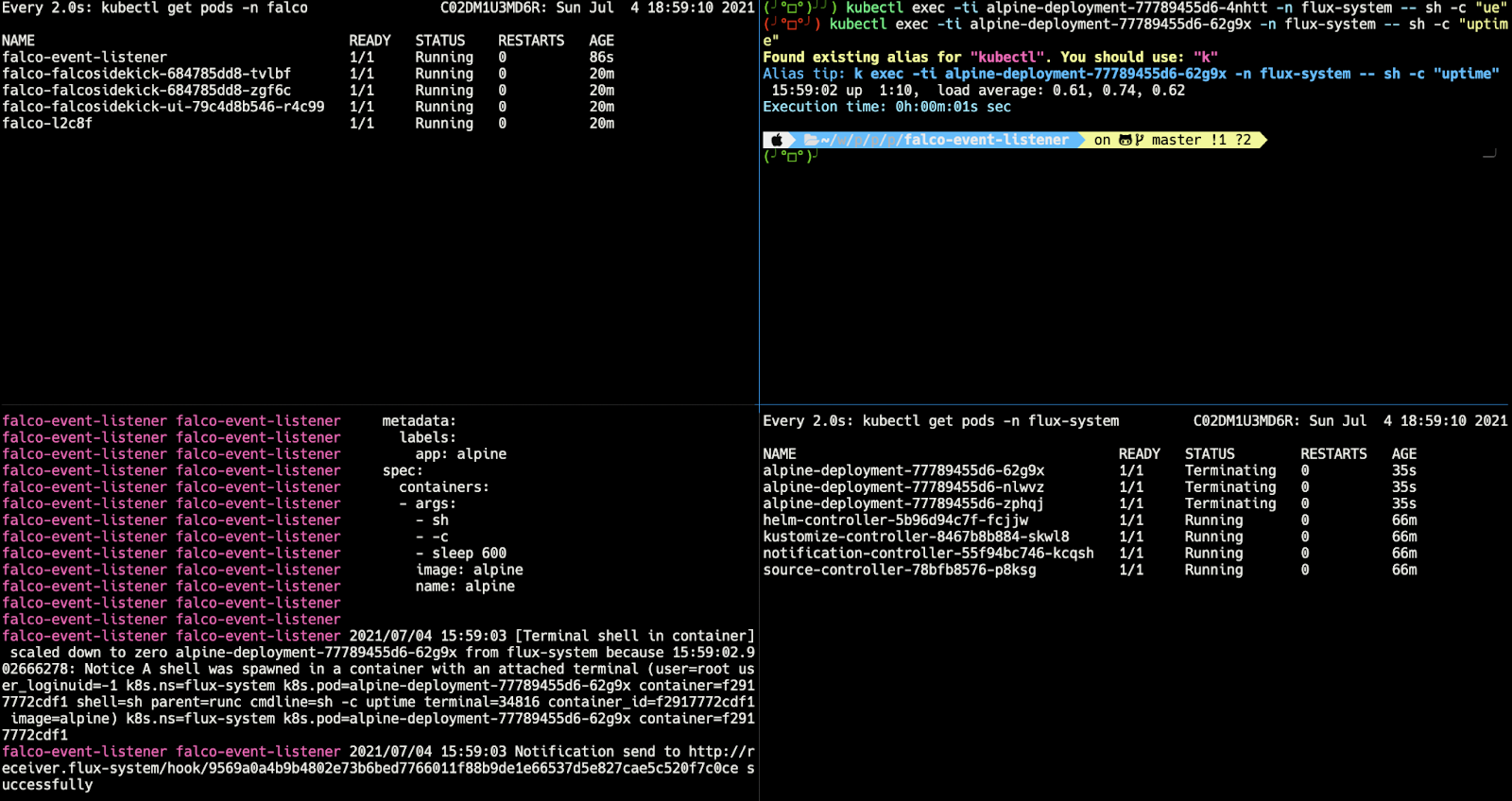
Source: Falco
25. Kube-hunter

Kube-hunter is a security tool that scans Kubernetes clusters for potential vulnerabilities. It automates the identification of weak points in Kubernetes deployments, including misconfigurations and inadequate access controls. By highlighting exploitable vulnerabilities, kube-hunter assists teams in strengthening their cluster’s security posture.
The tool conducts a variety of tests for different attack vectors, ensuring a complete security assessment. Its audit reports are useful for prioritizing and managing security tasks.
License: Apache-2.0
Repo: https://github.com/aquasecurity/kube-hunter
GitHub stars: 4k+
Contributors: 50+
26. Trivy

Trivy is an open-source vulnerability scanner for identifying security issues in container images. It examines images for known vulnerabilities in application dependencies, operating system packages, and configuration files. As a part of pre-deployment checks in Kubernetes environments, Trivy aids in maintaining strong security hygiene by ensuring images are clear of vulnerabilities before reaching production.
The tool integrates with CI/CD pipelines to provide security scanning, delivering context on discovered issues to assist in remediation.
License: Apache-2.0
Repo: https://github.com/aquasecurity/trivy
GitHub stars: 22k+
Contributors: 400+
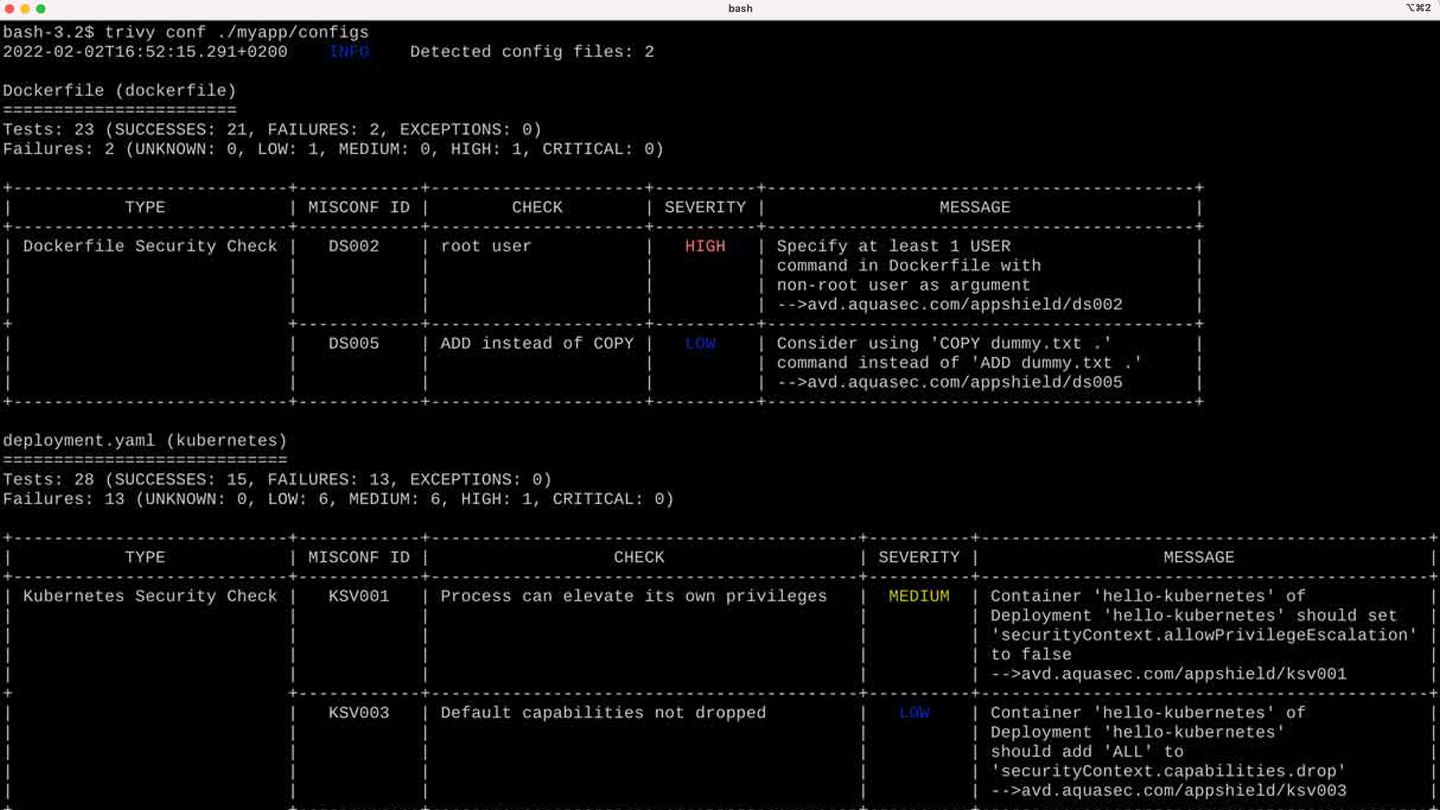
Source: Trivy
Kubernetes Validation Tools
27. OPA/Gatekeeper

OPA (Open Policy Agent) and its Kubernetes-specific extension, Gatekeeper, offer a framework for policy-based control management. They enable teams to enforce granular, declarative policies across Kubernetes clusters, aligning deployments with security and compliance requirements.
OPA Gatekeeper enforces rules on resources, improving adherence to policy standards without altering application code. Its policy automation ensures consistency, reducing human errors and enabling rapid, compliant deployments.
License: Apache-2.0
Repo: https://github.com/open-policy-agent/gatekeeper
GitHub stars: 3k+
Contributors: 200+
Source: OPA
28. Kyverno

Kyverno is a Kubernetes-native policy management tool that simplifies the creation and enforcement of policies using Kubernetes YAML syntax. It automates policy-based actions, such as validations, mutations, and generation of configurations, ensuring clusters operate within desired states.
Kyverno enables easier policy implementation without requiring deep knowledge of complex languages or tools. By integrating smoothly with existing Kubernetes workflows, it allows developers and operations teams to maintain conformity and security.
License: Apache-2.0
Repo: https://github.com/kyverno/kyverno
GitHub stars: 5k+
Contributors: 300+
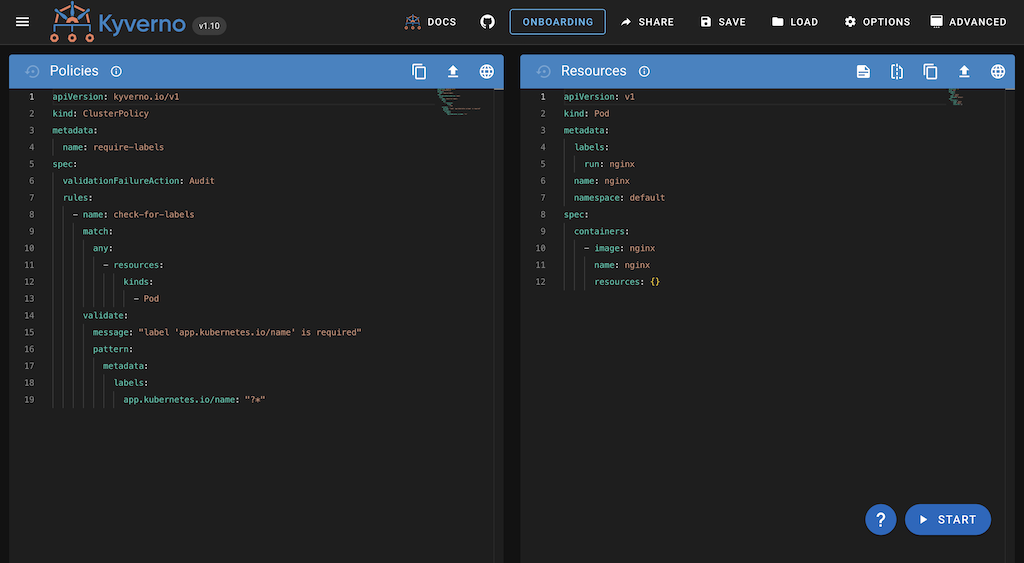
Source: Kyverno
29. Checkov

Checkov is a static code analysis tool for infrastructure as code, used to detect and prevent misconfigurations in Kubernetes manifest files. By scanning manifests for potential risks and vulnerabilities before they are applied, Checkov helps teams ensure their deployments are secure and compliant with best practices.
The tool offers granular control over policy enforcement, providing feedback on configuration issues. It can integrate into CI/CD pipelines to automate security and compliance checks.
License: Apache-2.0
Repo: https://github.com/bridgecrewio/checkov
GitHub stars: ~7k
Contributors: 350+
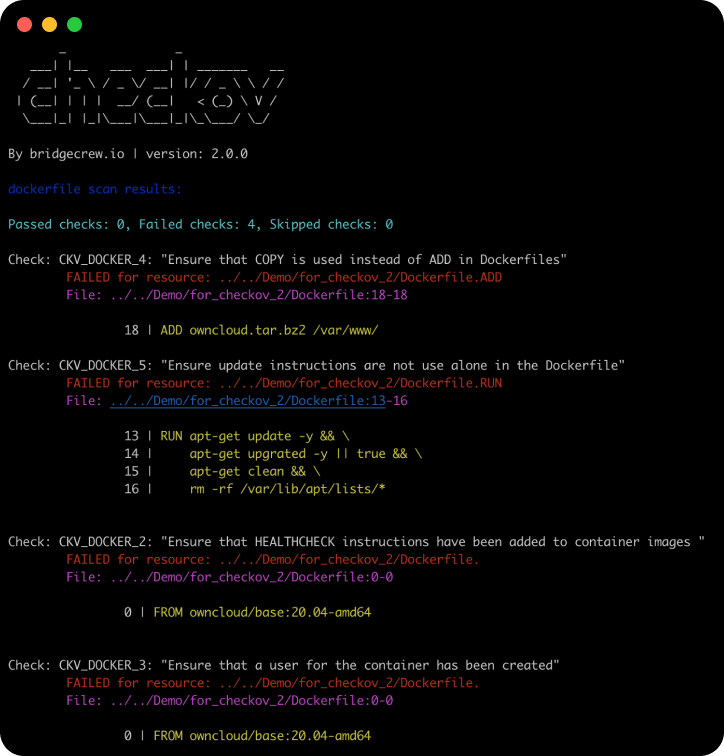
Source: Checkov
30. Kubeconform

Kubeconform validates Kubernetes YAML files against the Kubernetes OpenAPI schemas, ensuring that configurations adhere to the expected structural format. By quickly checking manifest files for compliance with Kubernetes specifications, it catches potential errors before manifest application, helping prevent runtime issues.
Integrated into CI/CD pipelines, Kubeconform improves the reliability of Kubernetes resource definitions by confirming that they conform to cluster expectations.
License: Apache-2.0
Repo: https://github.com/mongodb/mongo
GitHub stars: 26k+
Contributors: 750+
Related content: Read our guide to Kubernetes tools (coming soon)
Conclusion
Kubernetes tools are essential for simplifying the complexities of managing containerized environments. These tools enhance operational efficiency by automating routine tasks, improving visibility, and strengthening security. By simplifying the deployment, monitoring, and scaling processes, they enable teams to focus on innovation rather than the intricacies of Kubernetes management. Using the right combination of tools allows organizations to optimize their infrastructure, ensure reliability, and reduce operational overhead.
Learn more about Codefresh for cloud-native Kubernetes CI/CD
Deploy more and fail less with Codefresh and Argo